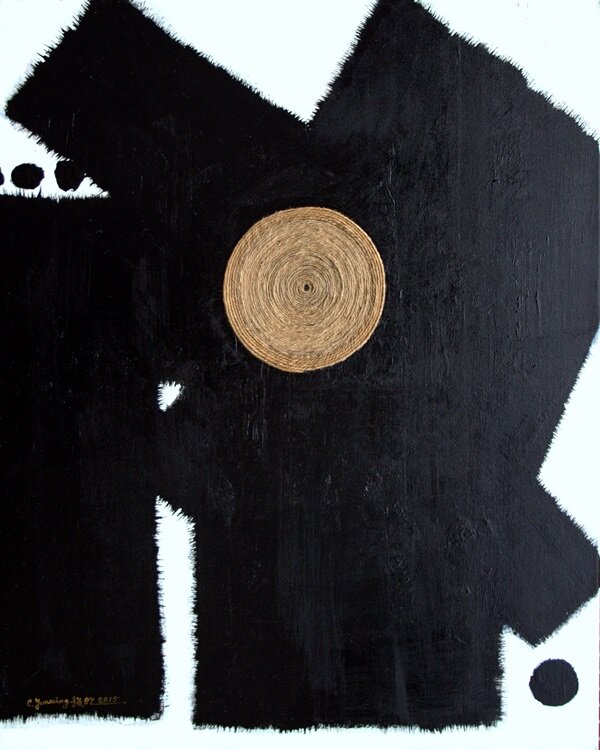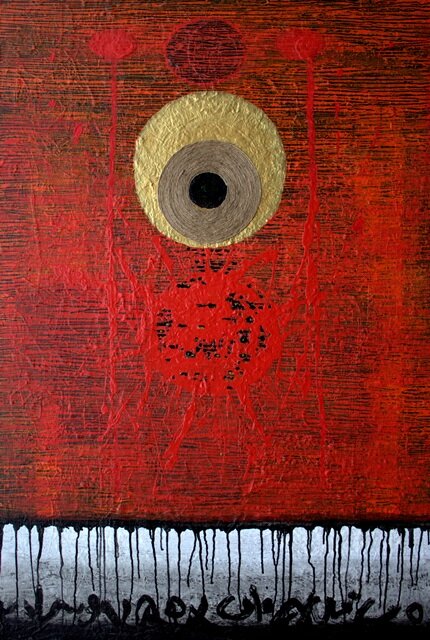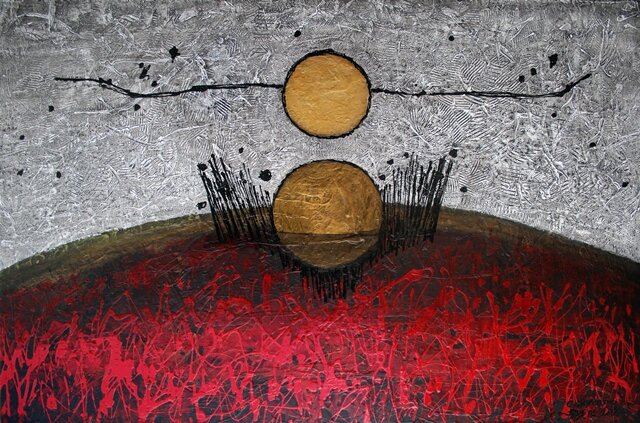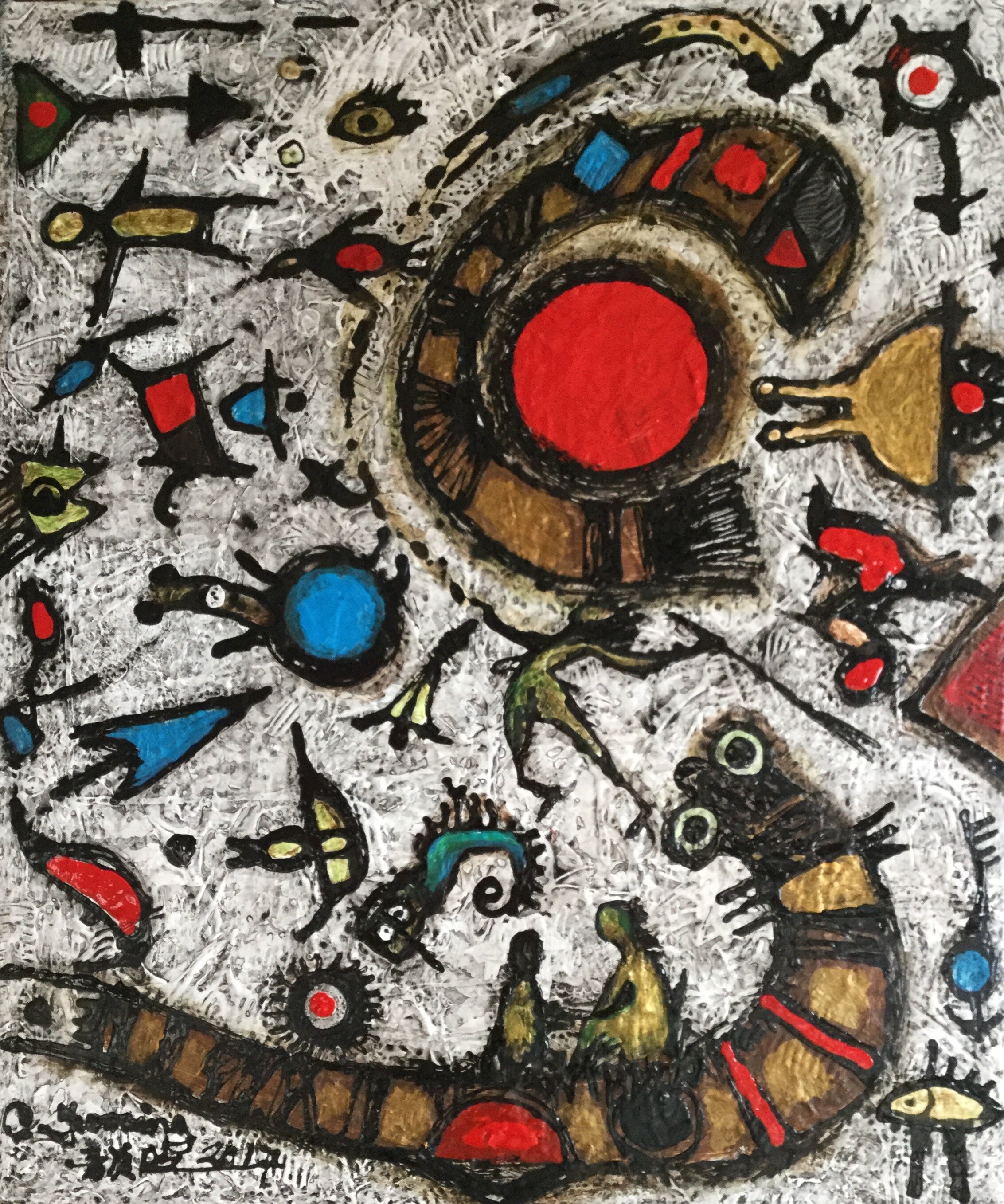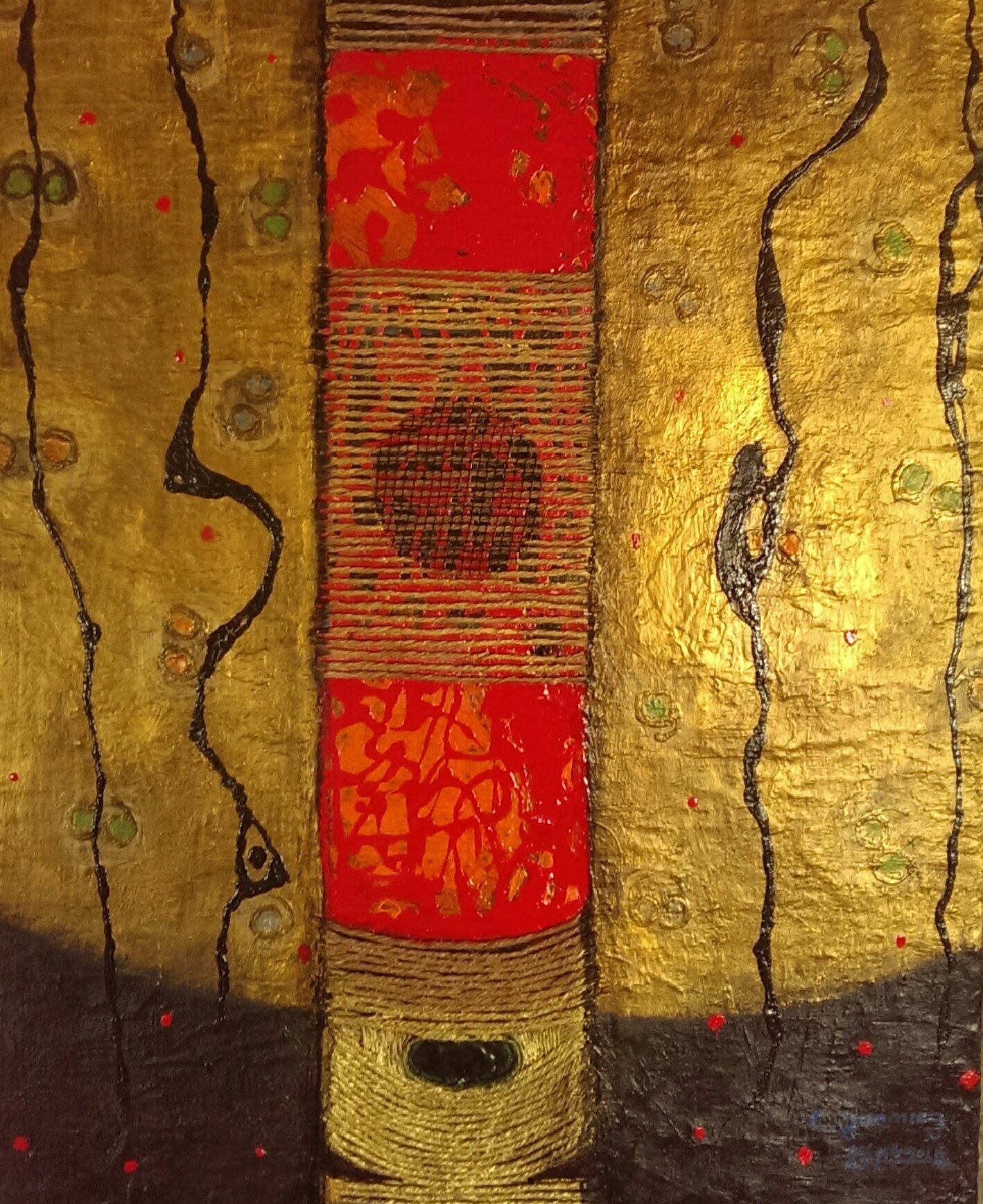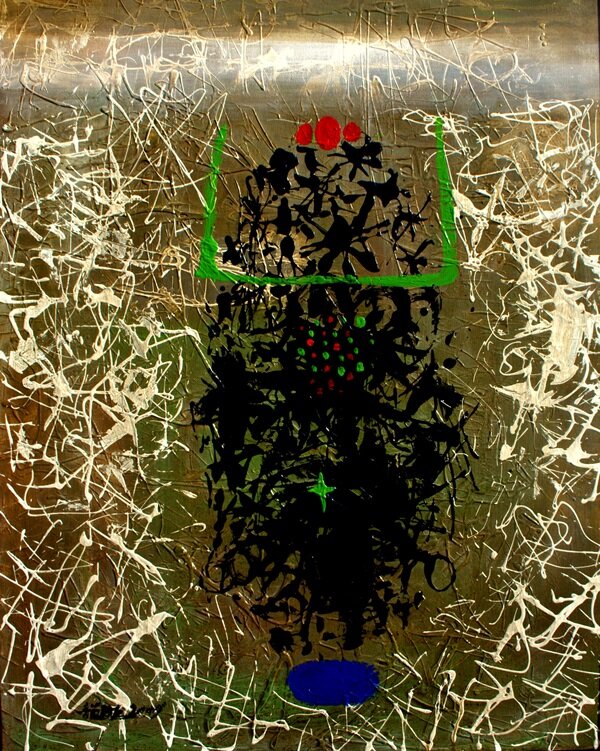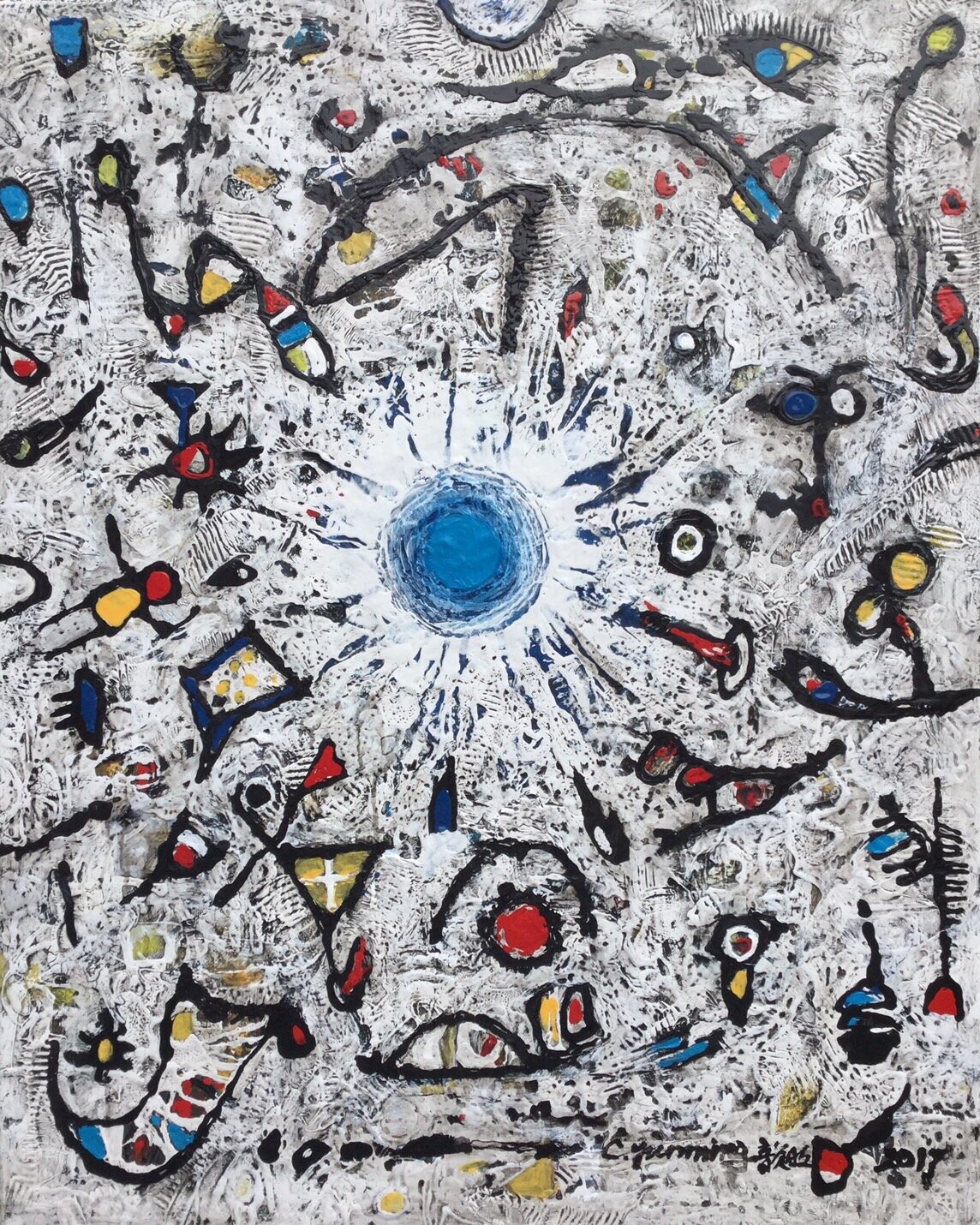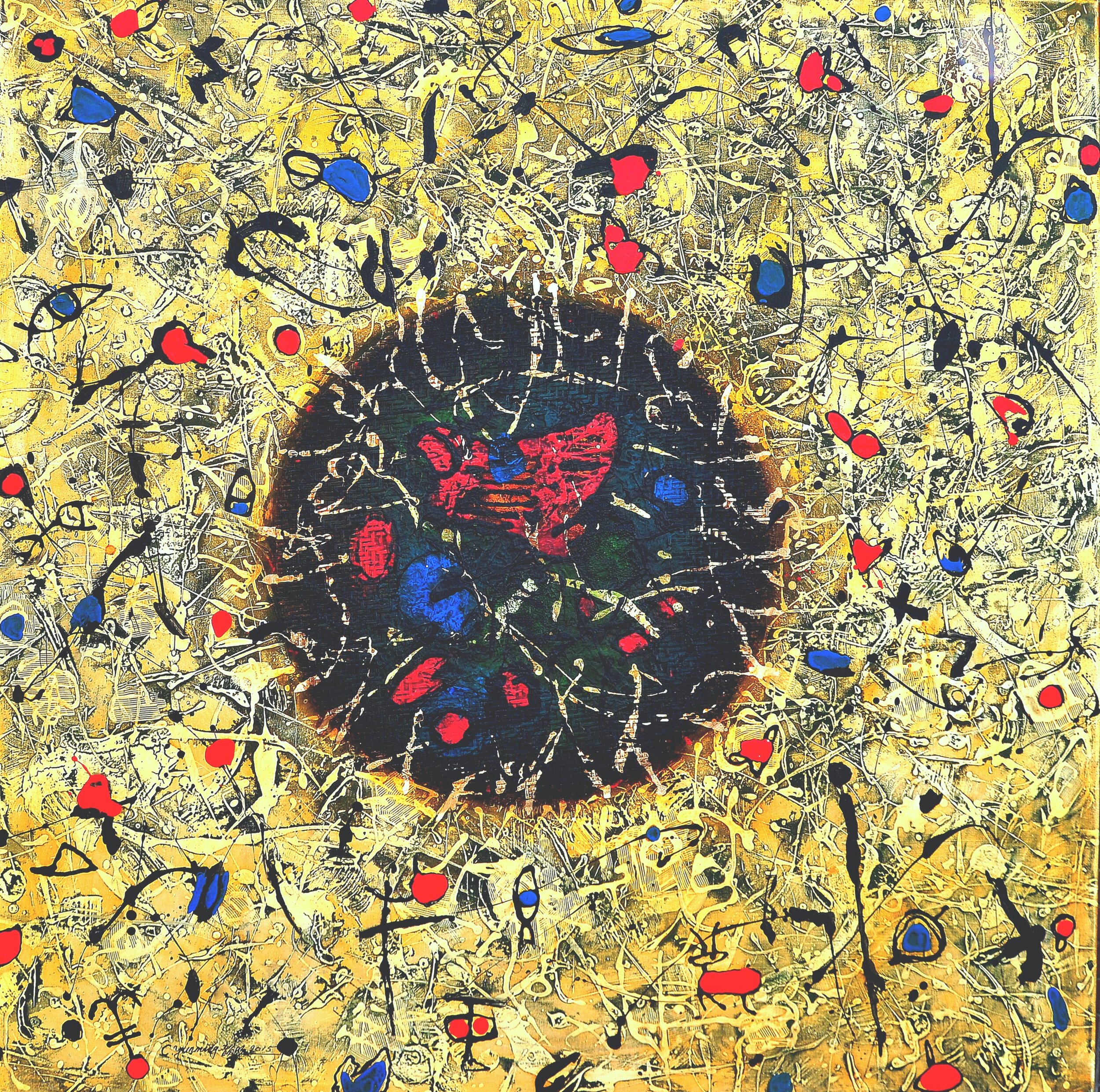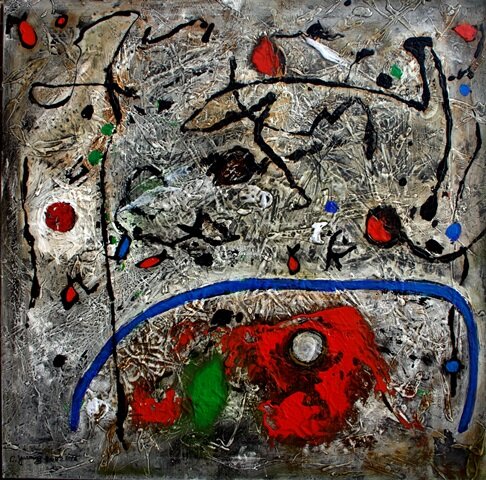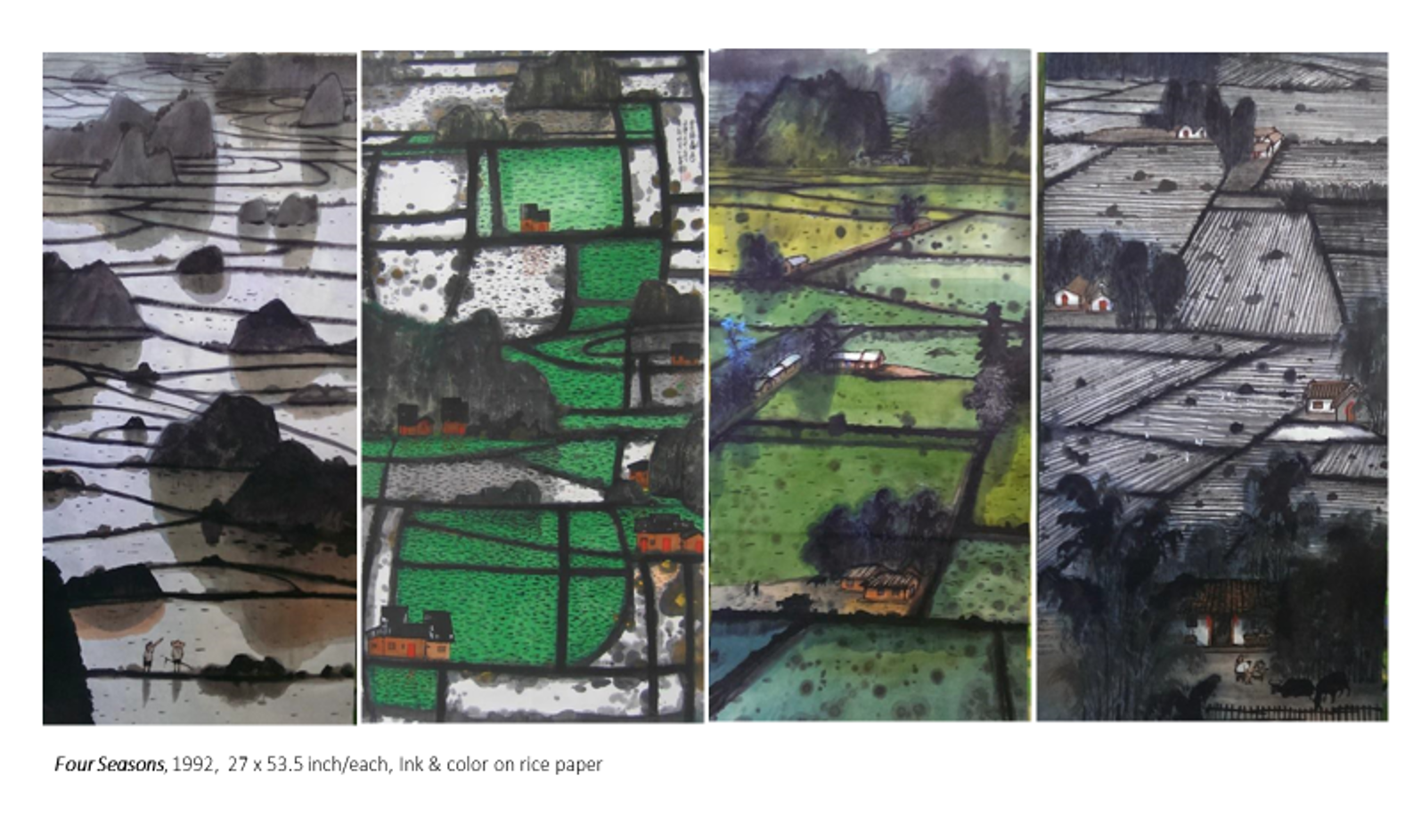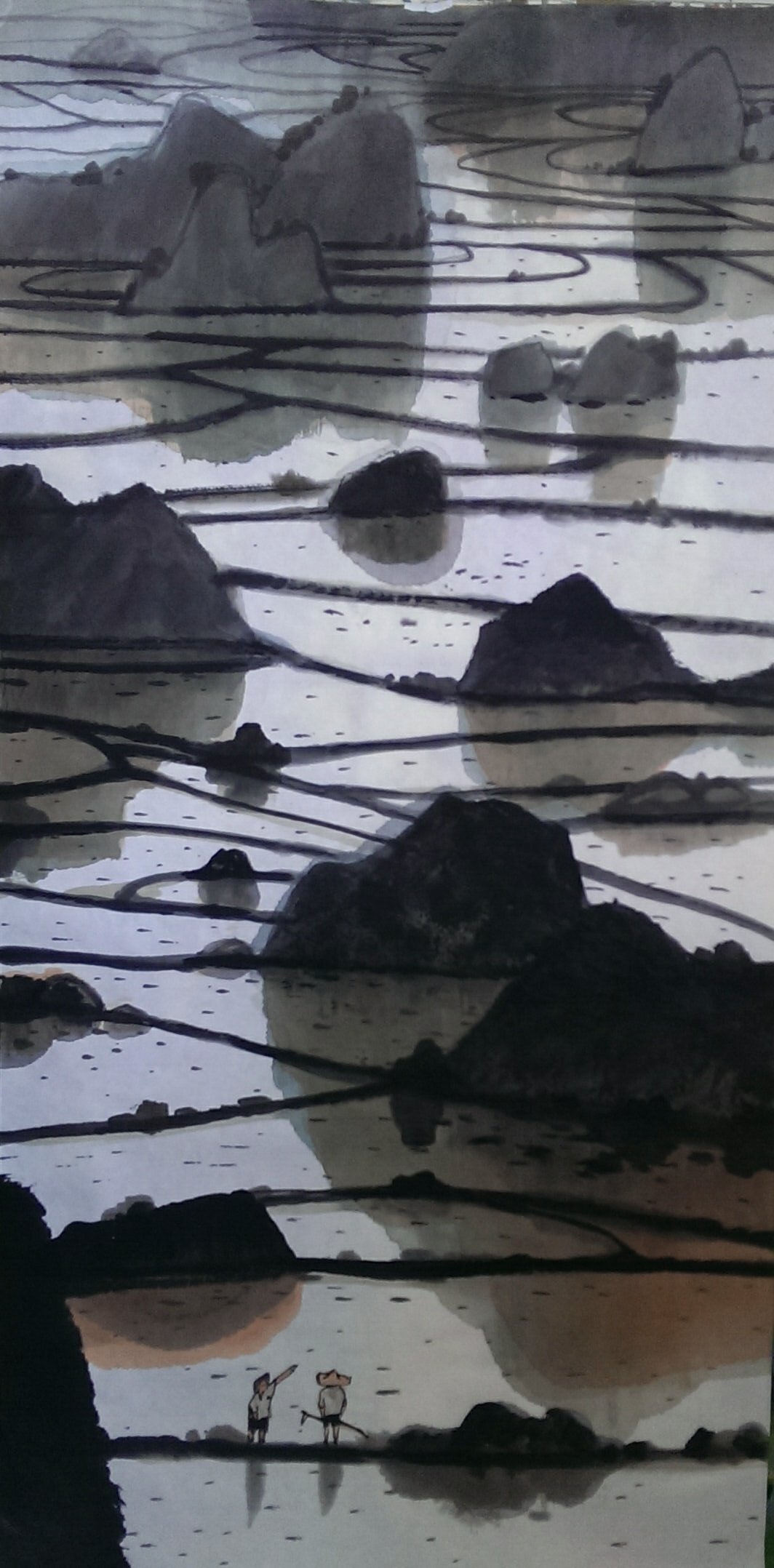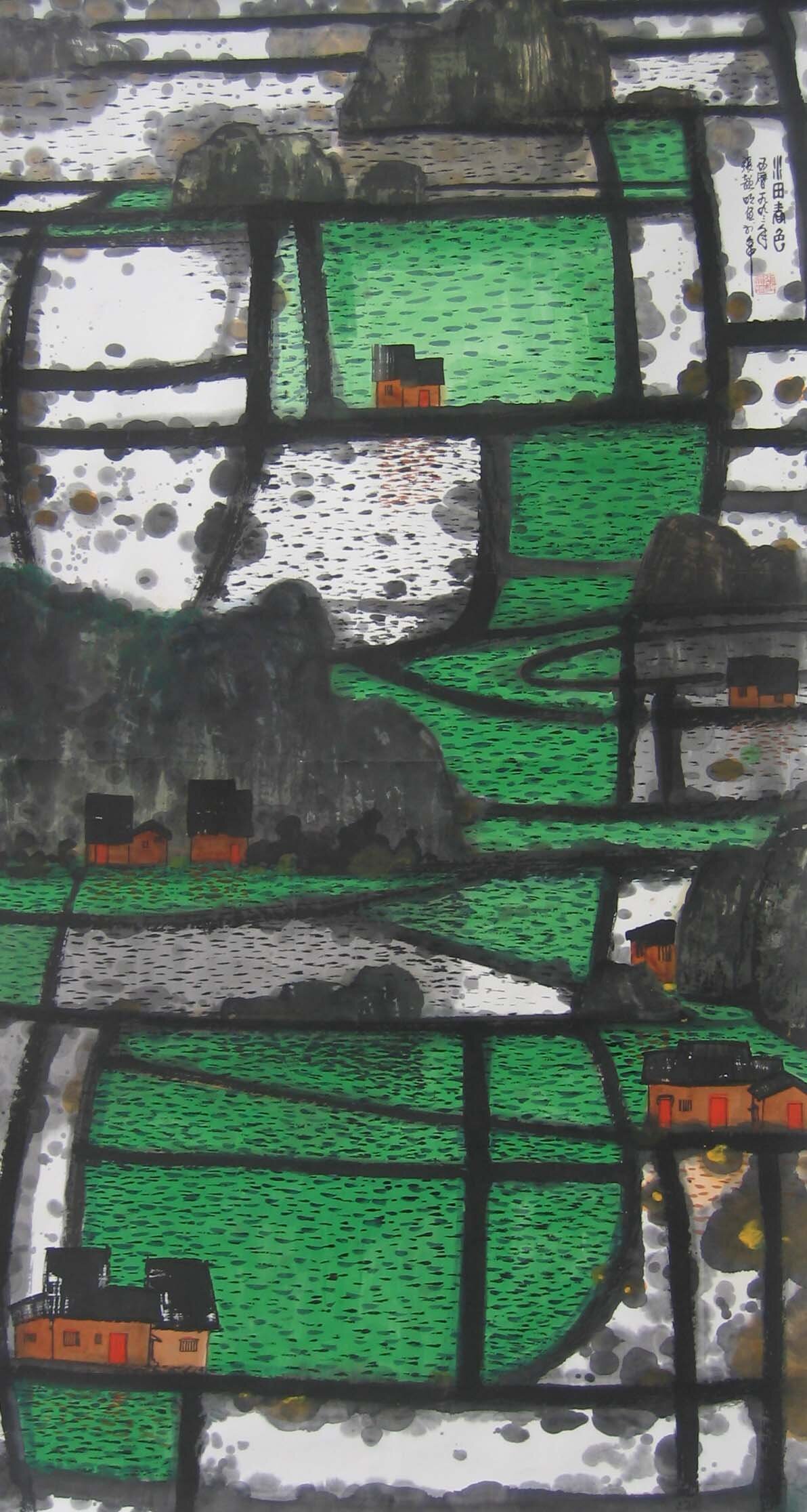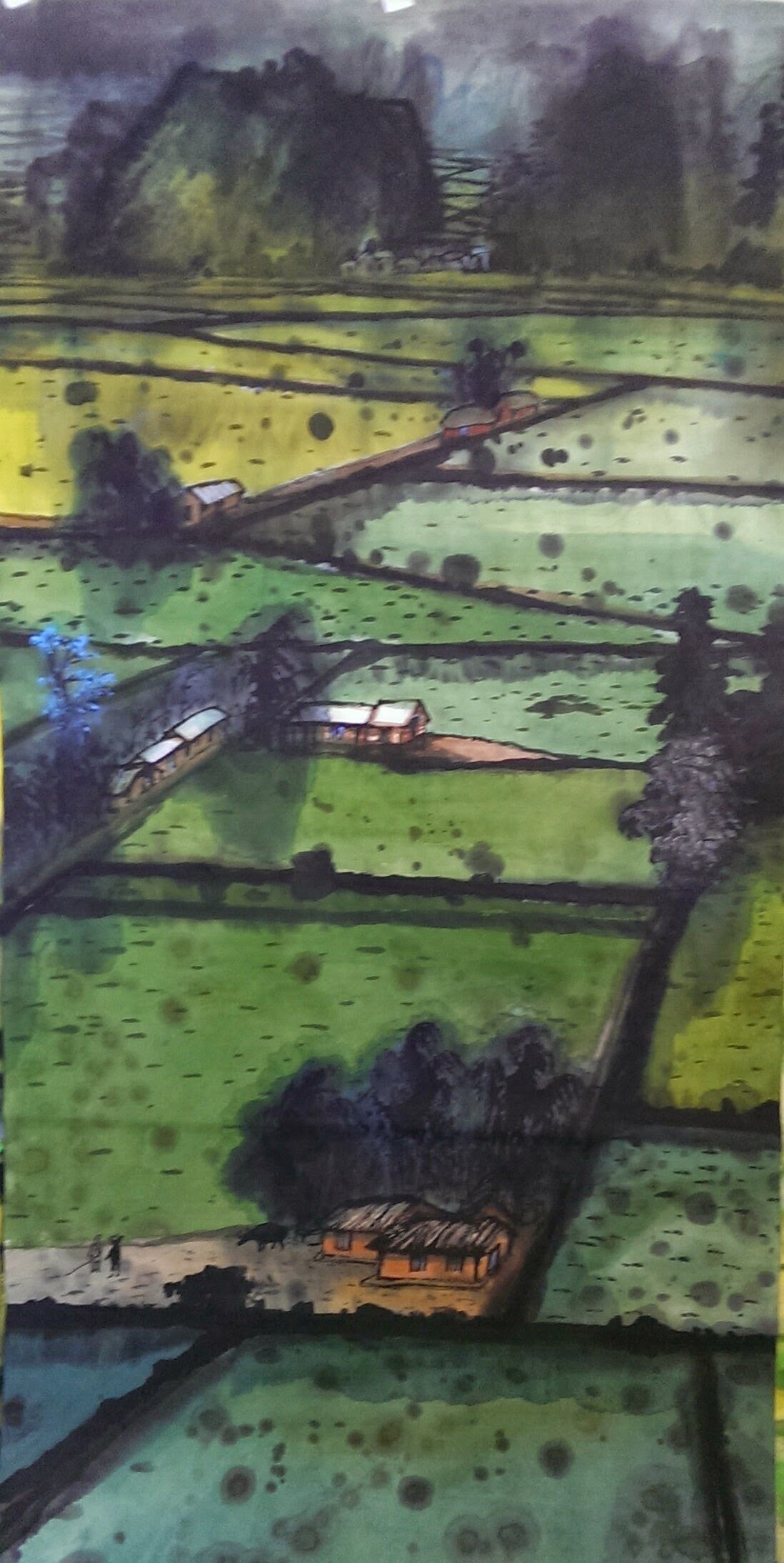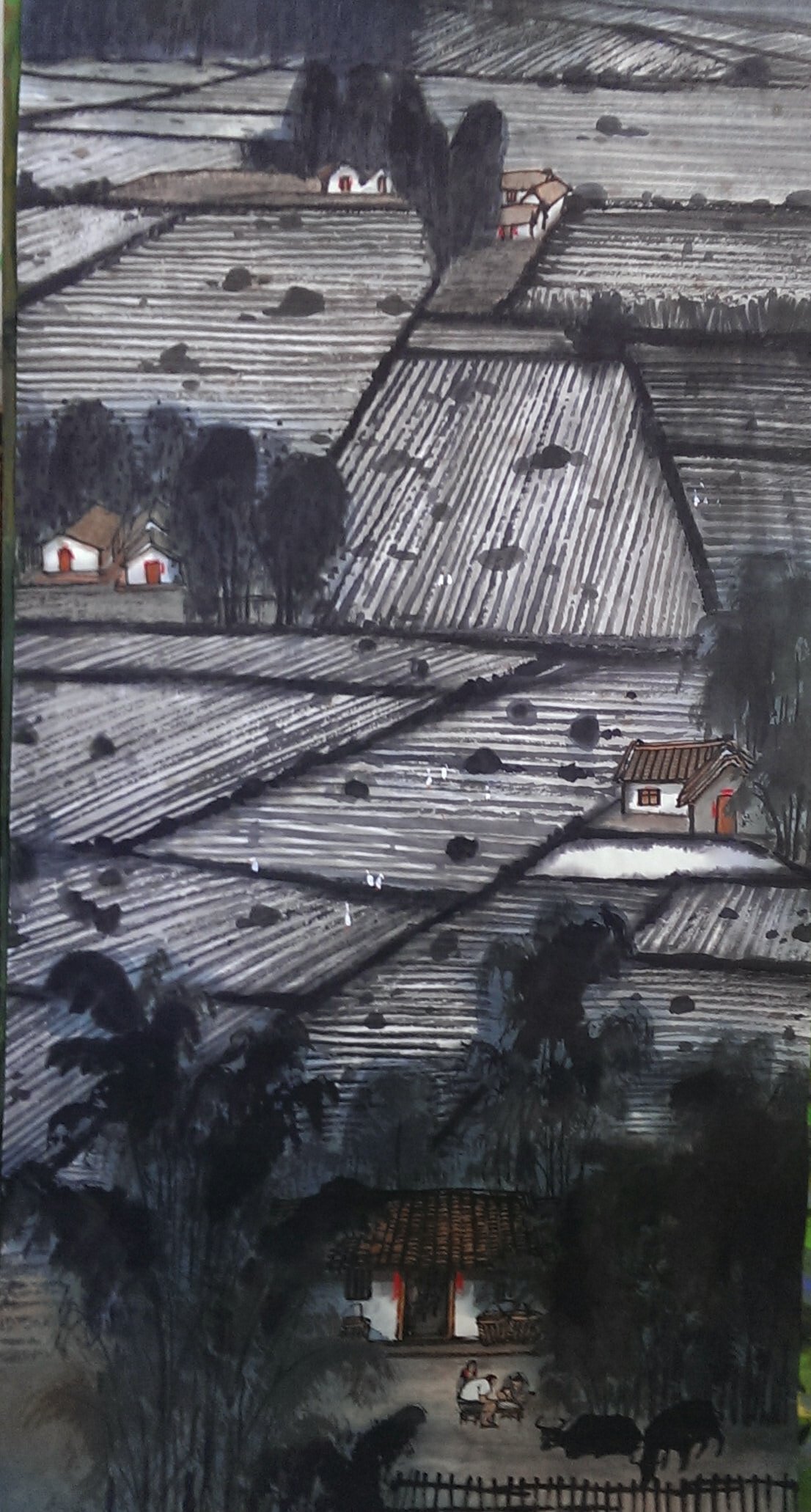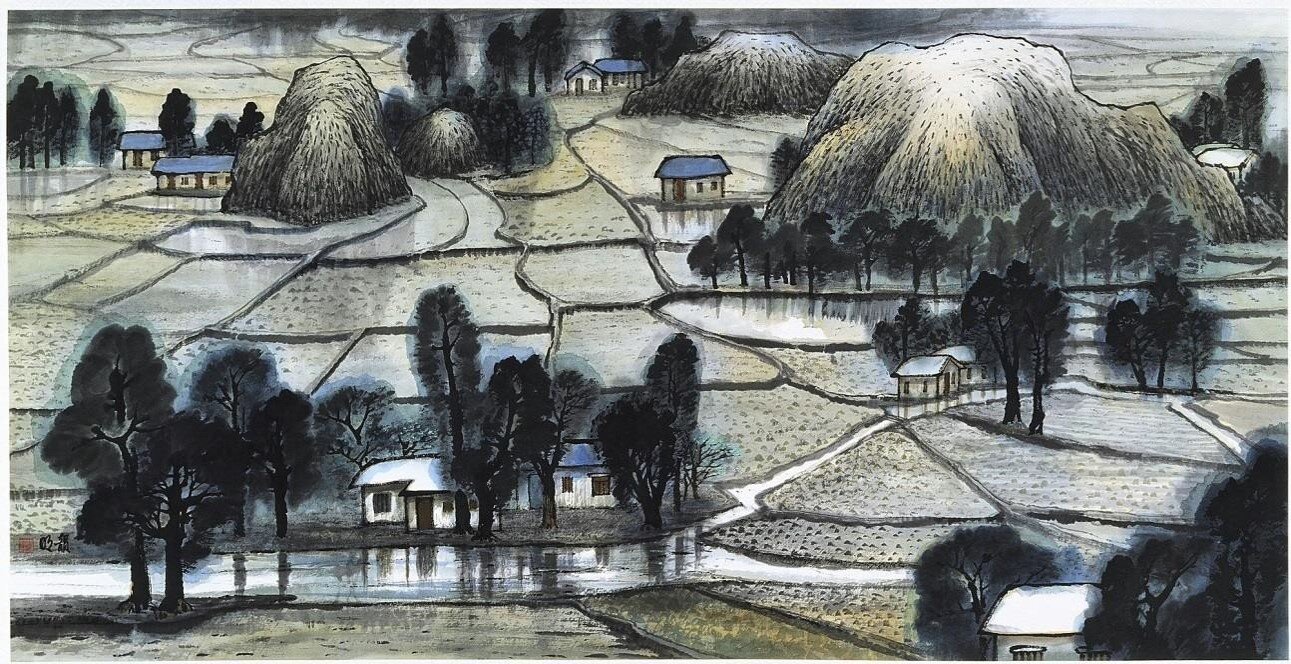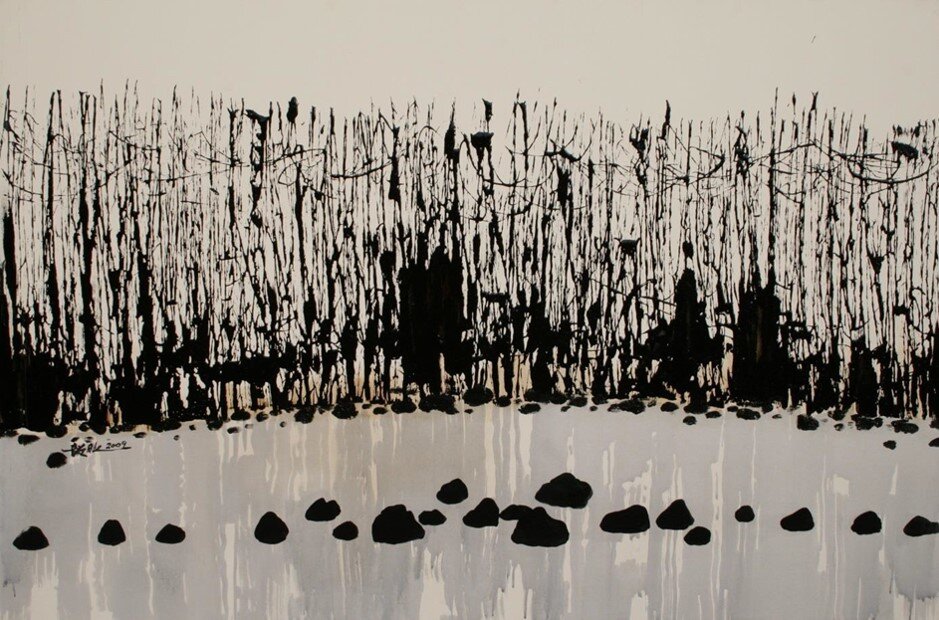YunMing Chang 張韻明
Reverie on the green rice fields of Taiwan
The depictions of horizontal moist and fresh green fields have lingered in the midst of our desolation period, and complements our relentless drive towards high technology.
We hope you do not begrudge praise and admiration.
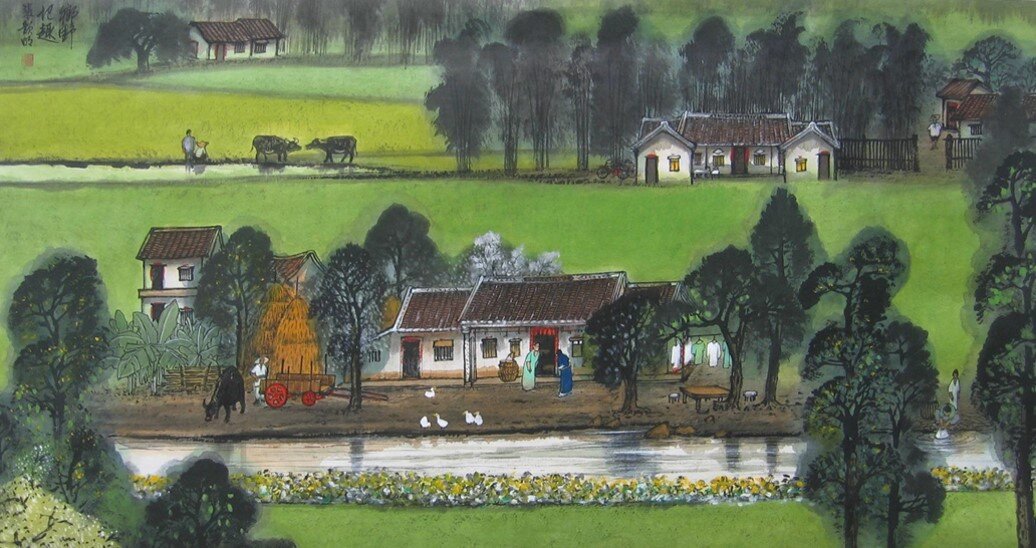
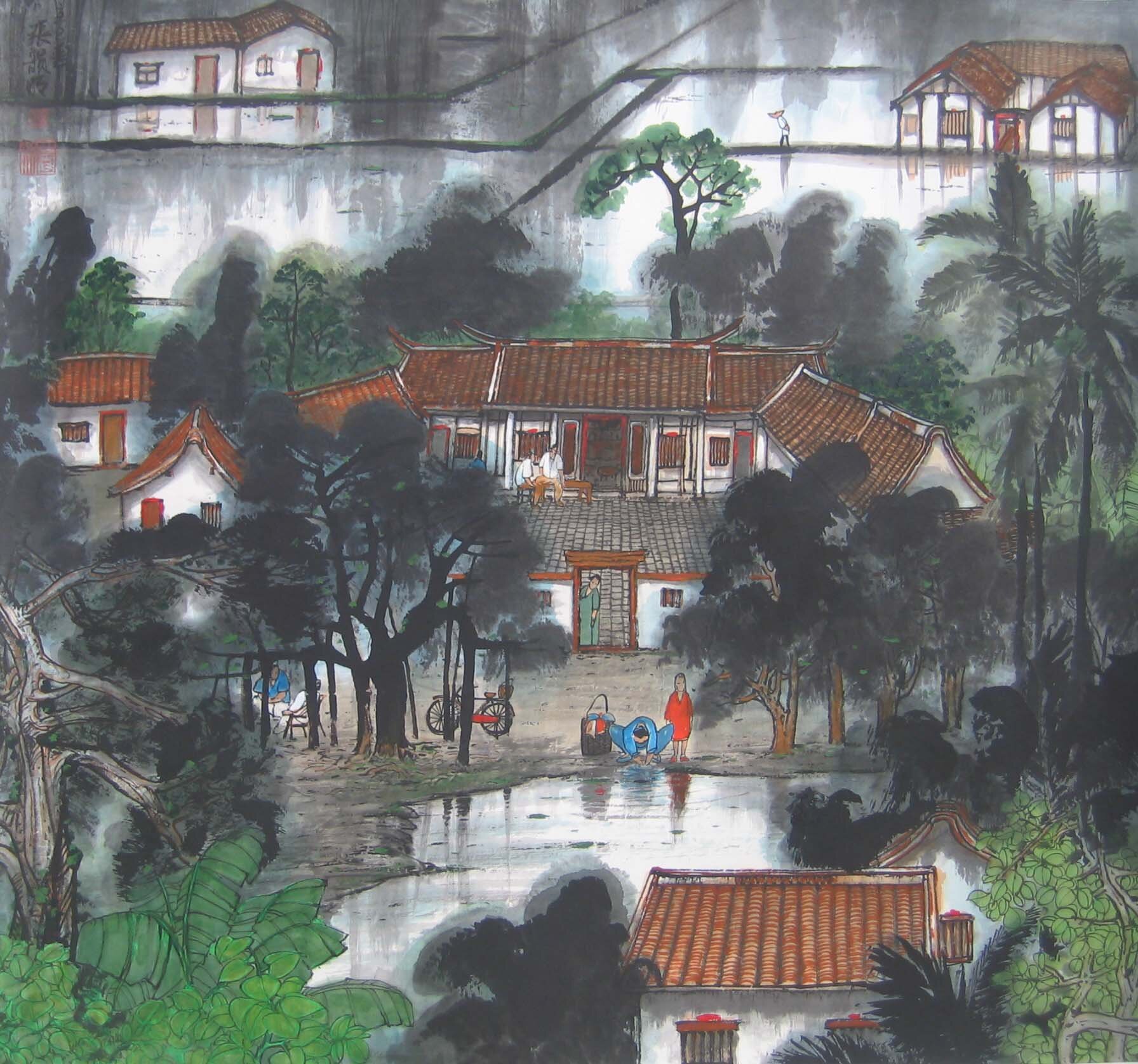
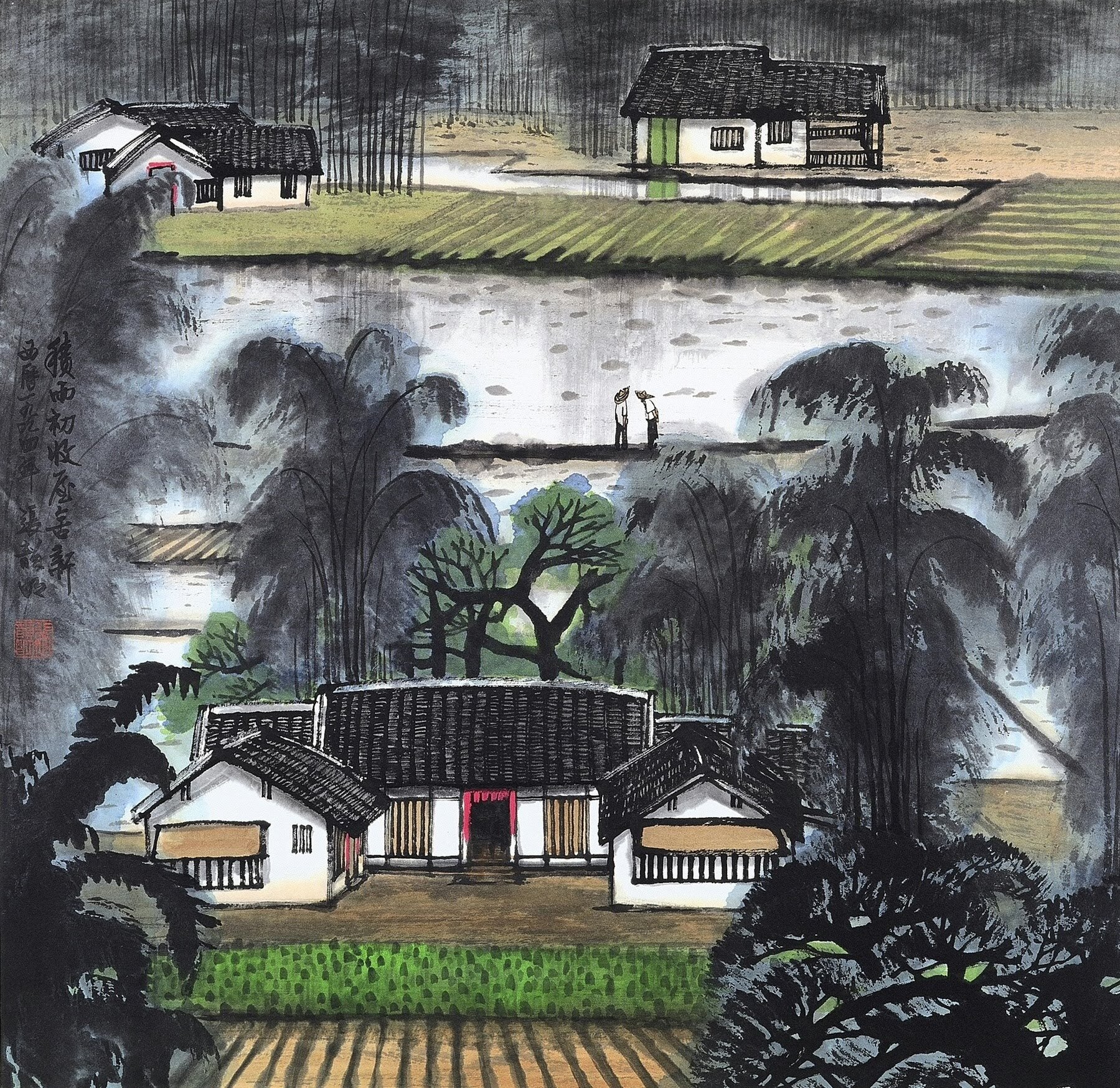
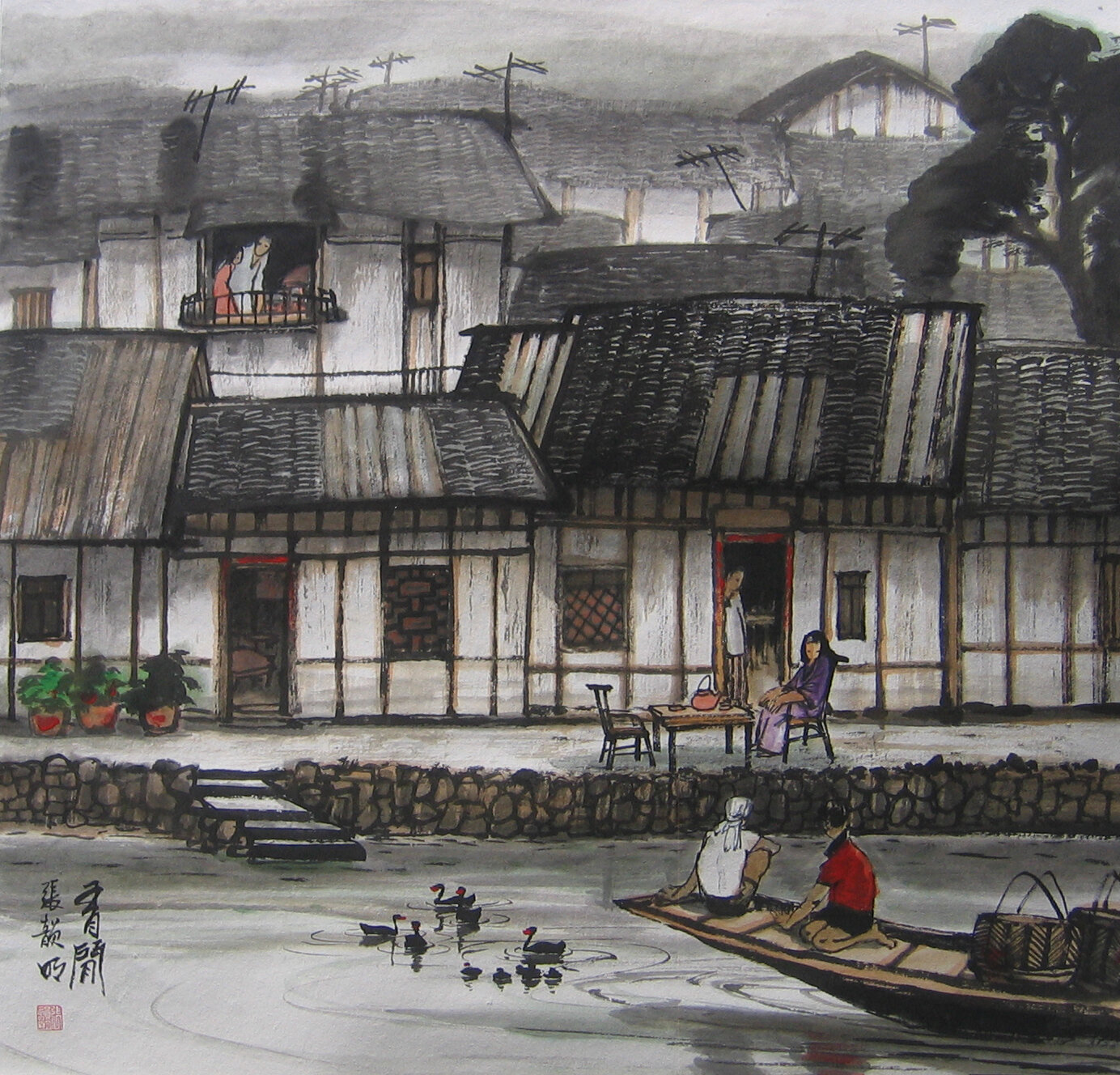
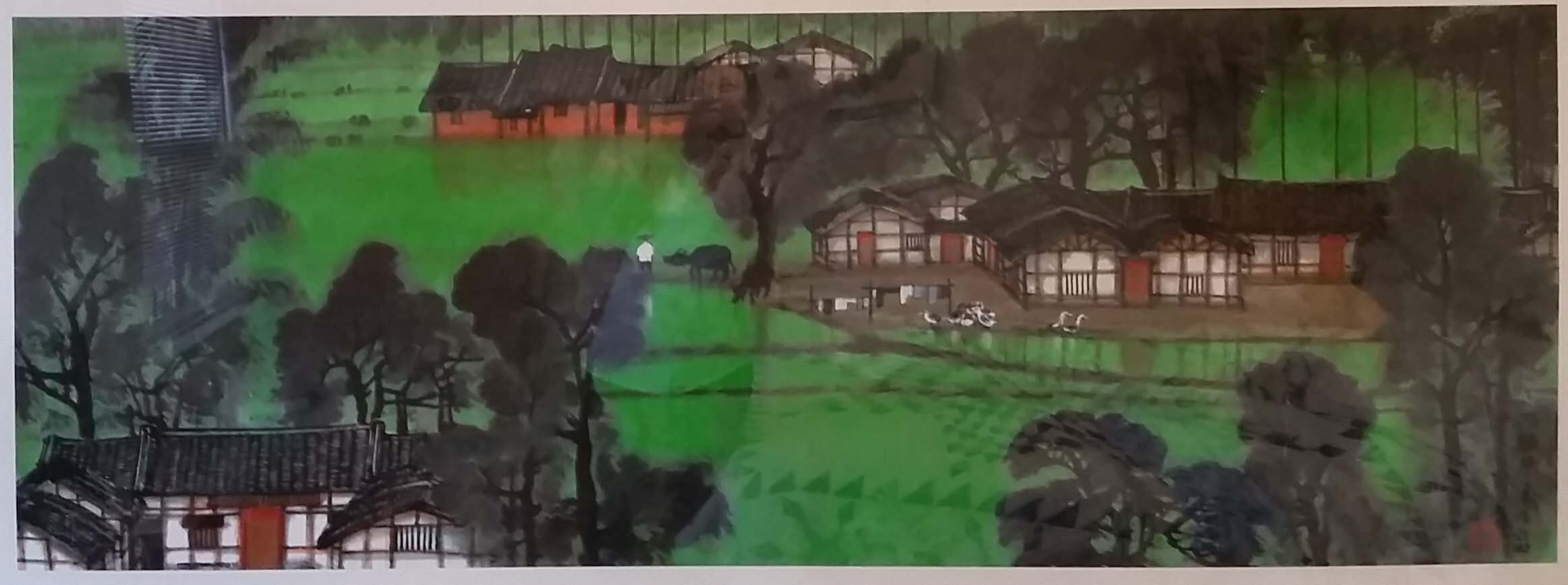
Yunming Chang 張韻明
Born in southern Taiwan, YunMing Chang currently lives and works in Taipei. He earned an MFA from Lindenwood University in St Luis, Missouri, and a BFA from National Taiwan University of the Arts, Taiwan.
In 1995, he received the Distinguished Alumni Award, National Taiwan University of the Arts. YunMing Chang is well-known as a stylist of color-ink. He has had solo exhibitions in numerous museums and galleries in Taiwan and internationally, such as National Taiwan Museum of Fine Art, Taipei Museum of Fine Art, and Dr. Sun Yat-Sen Memorial Hall Gallery. He also held many solo exhibits at art centers such as that at Lindenwood University; Chinese Cultural Center, Houston; Texas State Museum of Asian Cultures & Education Center, Corpus Christi, Texas; Art Expo, Taipei Cultural Center in New York City.
Are the effects of aesthetic signs only determined within cultural systems? Is this ethno-semiological? [1]
Unlike the last several decades, during the 1970s international art never flowed through a single channel to which a label could be attached; art was “diversified, split, factionalized” as Rosalind Krauss notes.[2] This splintering in art historical terms became manifest in Taiwan in the 1980s. Taiwan's history blends influences from its various colonizers; however, in the 1980s Taiwan recaptured its native culture identity, in reaction to being expelled from the United Nations and the lifting of martial law in Taiwan. The current in international trends was superimposed on this sea change in Taiwan’s circumstances in conformity with the conditions of the land and sea, thus forming a rich and complex culture. In this Artist-To-Watch chapter, we feature stunning watery rice fields by Taiwanese artist Yunming Chang.
Upon returning from three months of solo travel in mainland China, he adapted the techniques he had learned to Taiwan's renaissance of self-identity. With this innovation he made evident the connection to his rural roots, both in representational and later in abstract works. Chang dares place bright colors, particularly his characteristic vivid green, in brush ink to carry moisture on to rice paper, and takes as subject the surrounding environment. He demonstrates in a distinctive way a peaceful and pleasing farming life, orderly in a fascinating composition of staggered and horizontal lines. His art points out that seemingly natural boundaries of a rice paddy can be reconstructed and that they transect the painting screen. These countryside scenes, which speak so strongly to us, became his signature genre. A mix of melancholy with joy and exuberance gives these paintings an attractive sweetness. Whereas, the dark black ink smear is thick enough to shout out the unitary and partitioning forces.
Some pieces of his recent work with different symbolism seemingly appeal to diverse portions of the underlying structure of logic. We note that he extends his palette to oil paint and even asphalt. At the age of 50, Chang studied in the US and subsequently traveled around Europe in order to broaden his perspective on art. The results prefigure an image of personal freedom under the premise of pursuing complete liberation in artistic creation. Twentieth century modern art, especially Antoni Tapies (1923–2012), Joan Miró (1893-1983), and COBRA (or CoBrA, [3]) has inspired him. He pays special attention to texture, which he shapes via rough, overlapping, collage etc., Chang's symbolic paintings express his complex emotional discourse and are characterized by the interplay between texture and line, as well as densely rendered colors. Examples are Key to the World and Affix (see below) in mixed media on canvas. He imbues his creations with rhythm and emotion through his innovative signifiers.
Brush ink painting on paper, traditionally seen as a typical Chinese technique, depicts a high mountain and water - in black and white - or the royal color applied in accurate renditions of hierarchy to palace architectural forms. Blank space on the paper is as eloquent as painted areas. However in Taiwan a body of colored ink painting has gradually proliferated its own authority to represent local, ordinary living landscapes. This discourse reaches its highest development in Yunming Chang's painting. If his basic ink painting technique nods to Chinese forbears, his rich tone in color might remind us of gouache painting that can be counted as Japan's influence. Of course, an entirely accurate, hyper-realistic representation is antithetical to the spirit and conception of ink painting. The artistic imagination must exert its summary action on the scene. A deep green has been poured over the field; it is not a stormy power or gaudy but suggestive of the fresh moisture after the rain. Yet it also hints at a certain morbid lyricism, some kind of vulgarity of elegance. Clouds and sky are lost to view, with attention confined to black outlines of the land in Chang's paintings. The rice field edge loses its definition and is subordinated to the teeming emotion which the field carries. The black boundary is not lost bur repeated and amplified in the timbers of adjacent buildings.
When interrogating the eclectic possibilities in his ink, oil painting and different symbolic language expressions, we find something of the myth as the brush ink, and signs that Chang has taken from ancient cultures. Can we term ethno-semiological these effects of aesthetic?The product of several decades of activity as a professional artist this work unleashes patterns, or endless demolition of the self and negation the past. The operation of the universe is constantly moving simultaneously towards excellency and disorder. It is always Art that supplies Nature's lack, a voice that is a substitute for the voice of Nature.[4] -- Luchia Meihua Lee, Curator
Notes: [1] Institutions and Objections: Critical Revision, 1. Jacques Derrida (1930- 2004) 'The Exorbitant: Question of Method and 'the Engraving and the Ambiguities of Formalism', from Of Grammatology, in Art in Theory 1900-2000, An Anthology of Changing Ideas, ed. C. Harrison & P. Wood, 2002. Blackwell: MA, Oxford, pp.946-949 [2] Institutions and Objections: Critical Revision, 12. "Rosalind Krauss (1940-) 'Notes on the index, Part 1', ibid., p.994 [3] COBRA (or CoBrA) was a European avant-garde art movement active from 1948 to 1951 [4] op. cit. Derrida p.949
Portfolio website: https://changyunming.weebly.com/
Facebook: https://www.facebook.com/yunming.chang.7
Youtube: 水畫廊 張韻明油畫 2014.12.26 https://youtu.be/utZLGeoIz4o
email: artist.taiwan@gmail.com

